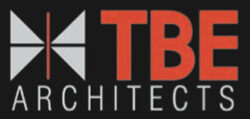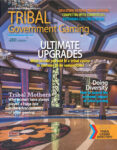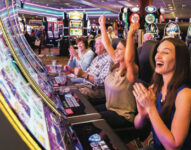
The dreaded “S” word—saturation—has been cropping up with increasing frequency over the past couple of years. With new states approving casino gaming and current gaming states expanding their offerings, existing casinos have a choice to make: compete or disappear.
But of course, it’s not that easy. There is no magic bullet to upgrade your appeal to your customers and potential customers. And the vagaries of the different markets add to that conundrum. So what’s a marketing executive to do?
Tribal Government Gaming asked five marketing experts—individuals and companies whose very livelihood depends upon giving good advice to casino executives about how to increase business—what a casino marketing executive can do that will have a true, immediate and positive impact on a casino’s business.
The answers are as prescient as they are effective. Take a few home with you.
——————————————————————————————-
BACK TO BASICS
by Ben Gordon
Walk the aisles at the latest industry trade show and you’ll be bombarded with apps and software that will deliver information on everything your guests desire… from the food they want to eat, to the entertainment they want to experience, to the games they want to play. It’s all there. Some of it is free just for the asking. Competition is fierce and everyone wants to sell you the latest and greatest marketing magic.
At least for that day.
Let’s acknowledge that there is a “race to the bottom” via increasing free play and giving away buffets—so what’s next? Bulletin: You can’t cheat the process. Every house has to be built by first laying a solid foundation for success.
Here’s the good thing—no problema. It’s amazing how many of your fellow marketing execs aren’t covering their assets—you know, like:
Realizing that revenue comes from many different sources. That’s right, it’s more than just slot machines. What are you doing to drive revenue from every direction?
Using data to make decisions. It’s still shocking to see how often people simply do not take the time to see what something did before continuing to do it or to change it. With all the tools at our fingertips, with new technologies to tell us where and when guests are making their buying decisions, our ability to collect and have timely and meaningful data impact our minute-to-minute strategies has never been better or more focused. Make sure you get you some data!
Eliminating unnecessary expenses.“Oh sure—we’ve already done that.” No, you haven’t. You’ve told somebody else or a whole bunch of somebody elses to do it.
Challenge your team daily with one simple question: “Is it nice or is it necessary?” Once people get focused on what they actually need to do their jobs, and the fact you’re going to hold them accountable for that, a lot of “fluff” goes away.
Reinforcing your brand. Your brand is more than a slogan and a logo. It’s your face to the world, and you must find ways to reinforce it throughout your organization.
As a good friend of mine, a marketing mind I respect and shall go unnamed, says, “Your front line must live it in order for your marketing team to say it.”
Having fun. This industry will chew you up and spit you out if you cannot find ways to make a 24/7/365 job fun. And if you think about it, what is more fun than a casino? Great food and entertainment, guests with fun and quirky personalities, gambling, fun and rewarding promotions, developing consistent and fair offers to get them to come back…
If you cannot have fun working in this environment, where can you have fun?
Ben Gordon is the owner and principal of Tribal Resource, LLC. After a successful 30-year career in advertising and marketing, he now works with tribal and casino executives in mentoring and developing tribal talent across the many disciplines of each enterprise. For more information, visit TribalResource.com.
——————————————————————————————-
A COMMODITY OR A SERVICE?
by Michael A. Meczka
In competitive casino environments, the marketing team has the most difficult task of differentiating what is quickly becoming a commodity experience. Casinos offer the same exact games with the same exact titles, with essentially the same exact pay-tables from the same exact manufacturers. How can a casino executive motivate a patron to gamble at one casino over another?
Simply learn what the patron wants, and deliver.
Begin by implementing a program to clarify the basic four elements of determining the gaming patron’s wants and needs. The following may seem elementary, but far more casinos opt to ignore than learn about their market or their patron.
First, conduct a market profile to decide the current competitive set as defined by the patrons, not by non-gambling casino executives.
Second, segment the existing database to determine which segments are profitable and which segments are wearing out more carpeting than they are worth.
Third, conduct a competitive analysis of the strengths, weaknesses, opportunities and threats among the patron-defined competitive set of properties. This would include a comparative shop—actually playing at the primary competitor(s)—to discover firsthand their reinvestment, loyalty building and rewards strategies, to name a few.
Fourth, review all and outline your own unique tactics that will deliver the highest perceived values to your most valuable gaming patron segments. Conduct qualitative immersion sessions with targeted patrons to be certain that what has been developed is what these patrons expect. This will ensure loyalty from the 20 percent who generate 80 percent of the gambling revenue. Be willing to “fire” those patrons in your database who are discovered to bring little or no value.
The above four exercises will help define what the gaming patron expects and provide a path to meet those expectations. When done properly in a competitive market, a casino will develop more loyal customers and understanding from its database through word-of-mouth, and do so by simply meeting their modest expectations.
Gaming patrons do not expect to be overly rewarded. They expect to stay in play for a reasonable amount of time proportionate to their gambling budget for that specific casino gambling experience. Time and again, we hear the plea, “Let me play for a while. Let my $100 last me an hour or two. Don’t take it in the first 10 minutes!”
We also hear the lament of winning too quickly. When experiencing a relatively big win (under $1,199) in the first 10 minutes of play, patrons continue to play even though they have more than doubled or tripled their starting gambling budget. Why?
“I am not ready to go home. I am here to relax and escape. Just let me play. I’ll give you all my gambling budget, but let me play for the time allotted to be entertained.”
It is the entertainment of gambling they expect. Remember Ace Rothstein in Casino:
In the
casino, the cardinal rule is to keep them playing and keep them
coming back. The longer they play, the more they lose. In the end, we get it all.
Let’s keep them coming back.
Michael A. Meczka is president of Meczka Marketing/Research/Consulting, Inc. During the company’s 35-year history, it has completed numerous projects focused on improving the total gaming experience. For more information, visit mmrcinc.com.
——————————————————————————————-
SOCIAL ACCEPTANCE
by Mark Elmore
As an ad guy, I’ve always remembered a quote by Robert Woodruff, the founder of Coca-Cola, who said, “I’ll put a Coke within an arm’s reach of desire.” It was advertising and marketing’s job to create the desire, and distribution’s job to get the product out there, everywhere.
Today is different. In the digital age, every product is literally within arm’s reach. Pull out the mobile phone, and find anything you want, whenever you want to. And therein lies the opportunity.
Our customers are gamblers, after all. Their desire to experience the rush of playing and winning games of chance and skill can now be fulfilled by us whether they are in our establishments or not, by playing our tribal online social casino games.
We can develop deeper, more fulfilling, more rewarding relationships by keeping them connected to us. They are with us even when they are not actually with us—thus underscoring that in this day and age, successful brands (relationships) must be totally interactive and immersive; customers are loyal only when they can engage with us on their terms, whenever they wish, so that we become an always-available, pleasurable part of their lives.
Online social casino gaming can and should be an extension of your brand. It gives us new tools for player acquisition and player reactivation—more ways to increase player engagement, increase loyalty, and most importantly, generate incremental visits and increased spend at the property.
By offering our own online casino games and social gaming, current customers and potentially new customers to the property can play for fun and for virtual credits. (It’s important to note that the thrill of winning exists even if the prize is only virtual, because it satisfies our primal need to play and be rewarded.)
The goal is twofold:
Engage customers—own their “time on device” when they desire to play outside the casino, whether it be on their desktop, tablet or mobile (in fact, more than half of all social gaming is now done on mobile), understanding that they’re going to play somewhere, and the last thing you want is for your good players to start playing a competitor’s online games. And secondly, turn those online visits into property visits.
Do that by rewarding free online play with virtual credits for food and beverage, lodging, entertainment and/or other discounts that they must redeem in your property. Plus, you can tailor the redemption periods for credits won online to increase player visits on “off” days, difficult times of the year, entertainment acts that are not selling, or to increase awareness or boost volume at new property amenities like restaurants, lounges, spa, etc.
Here’s some compelling info that’s available for public consumption: Data from Maryland Live! casino’s play-for-free site indicates that 12 percent of the online free-play database came into the casino to play for real money. Of these, 40 percent came more frequently, were worth 20 percent more per visit, and stayed 10 percent longer than other customers.
Let me repeat that: more frequency, more worth and longer stays than other customers. That is social behavior we can all get excited about.
I’ll close with a paraphrase of Mr. Woodruff’s old maxim: “We’ll put a game within an arm’s reach of desire,” and keep the hearts and minds of our current customers and win new ones.
After all, hasn’t it always been about “time on device?”
Mark Elmore is CEO of Gaga, a full-service advertising and marketing firm creating and executing marketing and advertising solutions across all media disciplines. Prior to founding Gaga in 2007, he directed advertising and marketing for Trump Plaza and the Isle of Capri casinos. For more information, visit Gaganation.com.
——————————————————————————————-
SUPERCHARGING PLAYER REVENUE GROWTH
by Gary Border
Here are six steps to immediately begin to increase gaming revenue:
1.) All casinos should invest in aggressive player development departments. To jumpstart growth and build both revenue and market share, enlist your player development staff to create player appreciation events.
Use personalized campaigns to target your inactive premium-level players and any defecting customers. It’s relatively inexpensive, and since the results can be measured in as little as a few weeks, there’s not a lot of risk. Personal touches are powerful loyalty builders, and your property can use the slower midweek space to lavish benefits on these player segments.
2.) Research your better players. It’s important to understand what keeps bringing them back, and it’s helpful to know what it would take to bring them in more—especially since it’s a safe bet they’re sharing their gambling dollars with your competition. You may be surprised how few of them are driven solely by comps. Sometimes they just like to feel “safe,” and the difference can be your entertainment, dining options, or even a favorite server or dealer.
3.) Step back and take a fresh look at your brand positioning relative to your competition. It’s important that your messaging and services be different. Your brand needs these three components to stand out:
a. Uniqueness from your competition in the market;
b. Relevance to the gambler audience you want to attract; and,
c. Clearly defined service and product benefits you can
deliver on.
A great position defines your brand so precisely that it simultaneously defines your competition. We once ran billboards that read:
• “Sure, you could earn a comp someplace else, but then
you’d actually have to eat there!”
• “Nowadays every casino has a theme. Ours is gambling!”
Our client indisputably offered both the best dining and gaming differentiation in all categories. Understanding the market starts with thoroughly understanding yourself.
4.) Use social and mobile media to accelerate your brand exposure. Mobile apps and websites can deliver clear calls to action considerably faster than mail and more personally than advertising. Not only does it keep your customers informed about coming attractions, but the applications give players instant point redemption, event registration, offer redemptions and more.
One of our regional casinos did away with mailers entirely in dealing with their most important gamblers. The same information was delivered instantaneously through applications. They drew higher response rates, eliminated print and postage expenses, and could be tracked instantaneously.
Granted, we tested this shift prior to making wholesale changes. I’d recommend you proceed cautiously as to avoid disenfranchising existing players who prefer traditional mail. Also, consider the benefits of geo-fencing, which is emerging as a powerful tool to reach gamblers precisely when they’re most susceptible to your message.
5.) Plan mass-market events that support your position and attract new players with big purses. Tournaments targeted to slot and table players can be very effective. Events should be designed to entice the three big markets: past players, current players and prospects who gamble with your competitors.
6.) Prospecting ensures a future with fresh players who will counter those you may lose to competitors or strains in the economy. Fish for new players using third-party databases with specific player information. Big data enhancements can increase targeting accuracy and response, but beware of the tendency to over-reward, as creating unrealistic future expectations is ultimately damaging to the brand.
Gary Border is president of Marketing Results, the first agency devoted to database marketing and brand development solely for the casino industry. He has worked in the past for Harrah’s Entertainment, the Trump Organization and Horseshoe Gaming. Marketing Results has more than 100 casino clients. For more information, visit marketingresults.net.
————————————————————————————————————————-
THERE’S NO ‘I’ IN TEAM
by John Mangini
When executives look at what makes a casino successful, both external and internal engagements are taken into account to identify how it will impact a property’s bottom line. The external engagements with players are critical points for all properties, since this is the source of the property’s identity and player loyalty that creates the revenue opportunities.
But how engaged will your players be if your staff is completely disengaged from the direction of your property?
To make guests feel welcome, you must first make your staff feel welcome. We have proven that an engaged workforce leads to higher customer satisfaction and higher RevPar that goes beyond the gaming revenue. In an industry that counts on player loyalty, it makes sense to put an equal focus on employee loyalty.
One of the primary components of building an engaged workforce is a dynamic employee recognition and rewards program. Recognized employees have been shown to work harder, stay with an organization longer and have more success than those working in an environment without a recognition program.
When designing a recognition and engagement program, there are a few things to keep in mind. First, choose a partner that fully understands organization goals and what executives are looking to accomplish with a program.
Second, find a partner that understands micro-targeting strategies and has the brand relationships to motivate employees with desirable merchandise. And third, design a program strategy that recognizes and engages employees through multiple touch points within the organization. Strategies can include anything from group recognitions for goals achieved to individual recognitions for milestones achieved.
Additionally, the program must include a peer-to-peer recognition component. Employees recognized by peers feel like they’re part of a team, with a common goal pushing them to work harder, unlike those who are not recognized by their peers. It’s your budget, and the rewards that are offered should be self-liquidating, as they are funded through the lift in the business.
As for player engagements, your loyal players want to feel valued beyond transient players, and there is no better way to demonstrate this than hosting an event that’s exclusive to your most loyal players.
Create customized reward events tailored to players’ need of feeling valued, and that personalize the experience today’s players are seeking. Shopping spree events allow multi-generational players to redeem their hard-earned points for tangible products across multiple product categories that will leave them satisfied and eager to get more involved.
Today’s players and employees want to be appreciated, want aspirational rewards and most of all, want choice.
Give them what they want, and watch your revenue and business grow year over year.
John Mangini, CRP, is marketing manager for Rymax Marketing Services/Brainstorm Logistics. Mangini is a Certified Recognition Professional with over 20 years experience in marketing for both brands and agencies whose contributions to Rymax have helped the organization see significant growth in revenue. For more information, visit rymaxinc.com.















